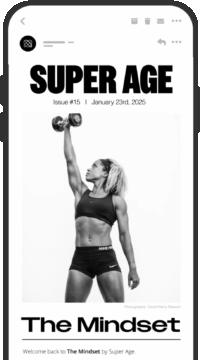Unlock Your Emotional Superpower: How Art Trains Your Brain for Longevity
Photography by Soya Cui
Viewing art activates 25 emotions in the brain, from [aw]nounA powerful emotion of wonder that enhances well-being and connection.Learn More to mystery to serenity. Here’s how using art as emotional training can strengthen [ri-zil-yuhns]nounThe ability to recover quickly from stress or setbacks.Learn More and support [lon-jev-i-tee]nounLiving a long life; influenced by genetics, environment, and lifestyle.Learn More.
You already know art can move you — a painting that gives you chills, a sculpture that makes you pause, or an image that feels strange yet unforgettable. But what’s happening in your brain isn’t just appreciation. It’s training.
According to a groundbreaking study published in Scientific Reports, visual art activates 25 distinct dimensions of emotion, far beyond simple joy or sadness. Researchers at UC Berkeley and the University of Amsterdam found that viewing art can spark awe, mystery, desire, serenity, even cosmic expansiveness, creating a complex emotional “map” that mirrors the richness of life itself.
“Art doesn’t just reflect emotion, it trains us in how to feel it more richly,” says co-author Dacher Keltner, a leading researcher on awe and the science of emotion.
Creating A Map of Our Emotions
The study’s findings are a game-changer. Yes, people reported common reactions like admiration, serenity, and amusement. But they also described more unexpected experiences, expansive, mind-bending sensations, like evoking the unknowable or sacred, imaginative, surreal states of mind, deep body awareness and longing, sometimes unsettling, but meaningful confusion, and even a sense of the transcendent.
Our emotions flow along gradients, like awe shading into serenity, or confusion morphing into fascination. The result? An emotional map that mirrors the complexity of real life while offering a mirror for self-reflection.
Why Art Matters for Well-Being
Building emotional granularity, the ability to identify and name subtle emotions, is linked to better mental health, lower stress, and even physical resilience. It’s not just poetic to distinguish between melancholy, nostalgia, or wistfulness; it’s protective.
This is especially valuable in midlife, when hormonal changes, caregiving stress, and identity shifts can cloud our inner compass. By engaging with art, we practice decoding and expanding emotions, which strengthens:
- Resilience → recovering faster from setbacks
- Longevity → lowering stress and [in-fluh-mey-shuhn]nounYour body’s response to an illness, injury or something that doesn’t belong in your body (like germs or toxic chemicals).Learn More, which supports long-term health
- Empathy → seeing and feeling more in ourselves and others
In short: training your emotional brain is as vital as training your body.
Try It Yourself: The 3-Minute Emotional Palette Test
You don’t need to visit a gallery or buy expensive prints. Just do this:
- Choose three works of visual art: Any era, any medium. Use a museum website, a book, or even Instagram.
- Look slowly. Give each piece at least 30 seconds.
- Ask yourself: What do I feel? What does this image seem to be? Use emotion-rich words like awe, mystery, grief, nostalgia, serenity, craving. Let them overlap.
- Journal it. Write down what came up and what surprised you. Need some inspiration? Explore the interactive emotions map created by the study’s authors. It’s a beautiful tool that lets you explore emotional responses across hundreds of artworks.
Engaging with art isn’t a luxury. It’s a practice, a way of building emotional intelligence that supports resilience, empathy, and longevity. The next time a painting or photograph pulls you in, pause. What you feel is more than fleeting; it’s emotional [strength tray-ning]nounResistance-based exercise to build muscle and support healthy aging.Learn More for your future self.
Read This Next
The information provided in this article is for educational and informational purposes only and is not intended as health, medical, or financial advice. Do not use this information to diagnose or treat any health condition. Always consult a qualified healthcare provider regarding any questions you may have about a medical condition or health objectives. Read our disclaimers.

